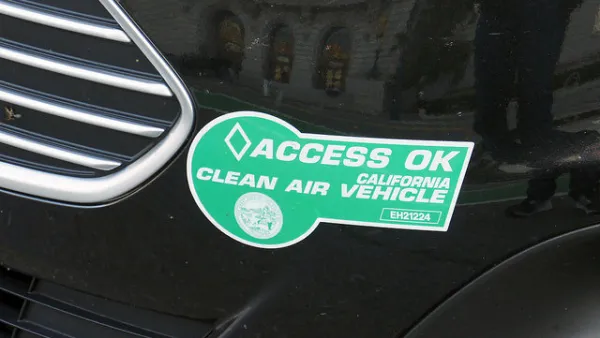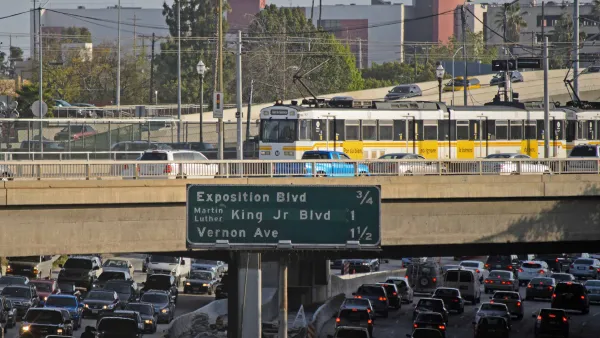California industries are buying offsets in lieu of purchasing carbon allowances or reducing carbon emissions, and most of the offsets are spent out-of-state, assisting the recipients economically as well as reducing greenhouse gas emissions.
In this radio report,
- "Air quality standards require methane engines in the Central Valley to run extremely cleanly. That can require expensive technology, such as one piece of equipment that costs as much as a quarter of a million dollars.
- "The price of electricity that farmers sell back to the grid is not high enough to help farmers pay off the cost of the digesters."
The Pennsylvania farmer is quite happy with his biodigesters, which Bartolone describes in some depth. “Because of the manure that we had, and the need for energy, it was just the perfect fit,” says Dennis Brubaker, the farmer.
While Brubaker is paying a little more than a million dollars for the system on his pig farm, recent state grant information suggests the cost could reach six million (dollars) on a California dairy farm.
In this short video, Bartolone explains that large California industries that "fall under the cap," i.e., must comply with cap-and-trade provisions, "are given a threshold for how much greenhouse gas they can produce for free. Above that threshold," they have three ways to comply:
- Reduce carbon emissions. They can even sell excess carbon allowances.
- Purchase carbon allowances. Funds go to the Greenhouse Gas Reduction Fund and are used to reduce emissions in California.
- Purchase offsets. However, there are a limited amount of offsets.
The offsets make sense from an economical perspective in that they make it easier for California industries to comply with cap-and-trade, even if the environmental and economic benefits are realized elsewhere.
Bartolone's CALmatters' colleague. Laurie Rosenhall, visits the Clean Harbors Environmental Services incineration plant in Eldorado, Arkansas, "which as of now, a CALmatters analysis discovered, has generated almost one-third of the offset credits approved by the California Air Resources Board (CARB) under the state’s cap and trade system," writes Rosenhall.
The facility "destroy(s) chlorofluorocarbons – cooling gases that could otherwise deplete the ozone layer." It's also a super-potent greenhouse gas. However, the Clean Harbor credits were since invalidated due to an investigation launched by CARB that showed improprieties at the plant—but the decision was a controversial one.
There are opponents to the offset program, such as "Citizens’ Climate Lobby, a group that sued the state over offsets, and lost."
“The activities that have been chosen for offsets are virtually all activities that were happening to some degree prior," states volunteer Laurie Williams. "And where it’s impossible to tell what additional increment of that activity you’re getting because of the offset credit. It’s too complex.”
She has a point. Brubaker admits he was going to purchase the digester with or without the cash from the California offset credits.
Like them or not, "(t)he supply of offset credits has doubled since last year, according to the Climate Action Reserve," a registry for offsets, writes Bartolone at the end of her piece.
FULL STORY: Why California Polluters Pay a Pennsylvania Pig Farmer to Curb Emissions

Analysis: Cybertruck Fatality Rate Far Exceeds That of Ford Pinto
The Tesla Cybertruck was recalled seven times last year.

National Parks Layoffs Will Cause Communities to Lose Billions
Thousands of essential park workers were laid off this week, just before the busy spring break season.

Retro-silient?: America’s First “Eco-burb,” The Woodlands Turns 50
A master-planned community north of Houston offers lessons on green infrastructure and resilient design, but falls short of its founder’s lofty affordability and walkability goals.

Test News Post 1
This is a summary

Analysis: Cybertruck Fatality Rate Far Exceeds That of Ford Pinto
The Tesla Cybertruck was recalled seven times last year.

Test News Headline 46
Test for the image on the front page.
Urban Design for Planners 1: Software Tools
This six-course series explores essential urban design concepts using open source software and equips planners with the tools they need to participate fully in the urban design process.
Planning for Universal Design
Learn the tools for implementing Universal Design in planning regulations.
EMC Planning Group, Inc.
Planetizen
Planetizen
Mpact (formerly Rail~Volution)
Great Falls Development Authority, Inc.
HUDs Office of Policy Development and Research
NYU Wagner Graduate School of Public Service



























